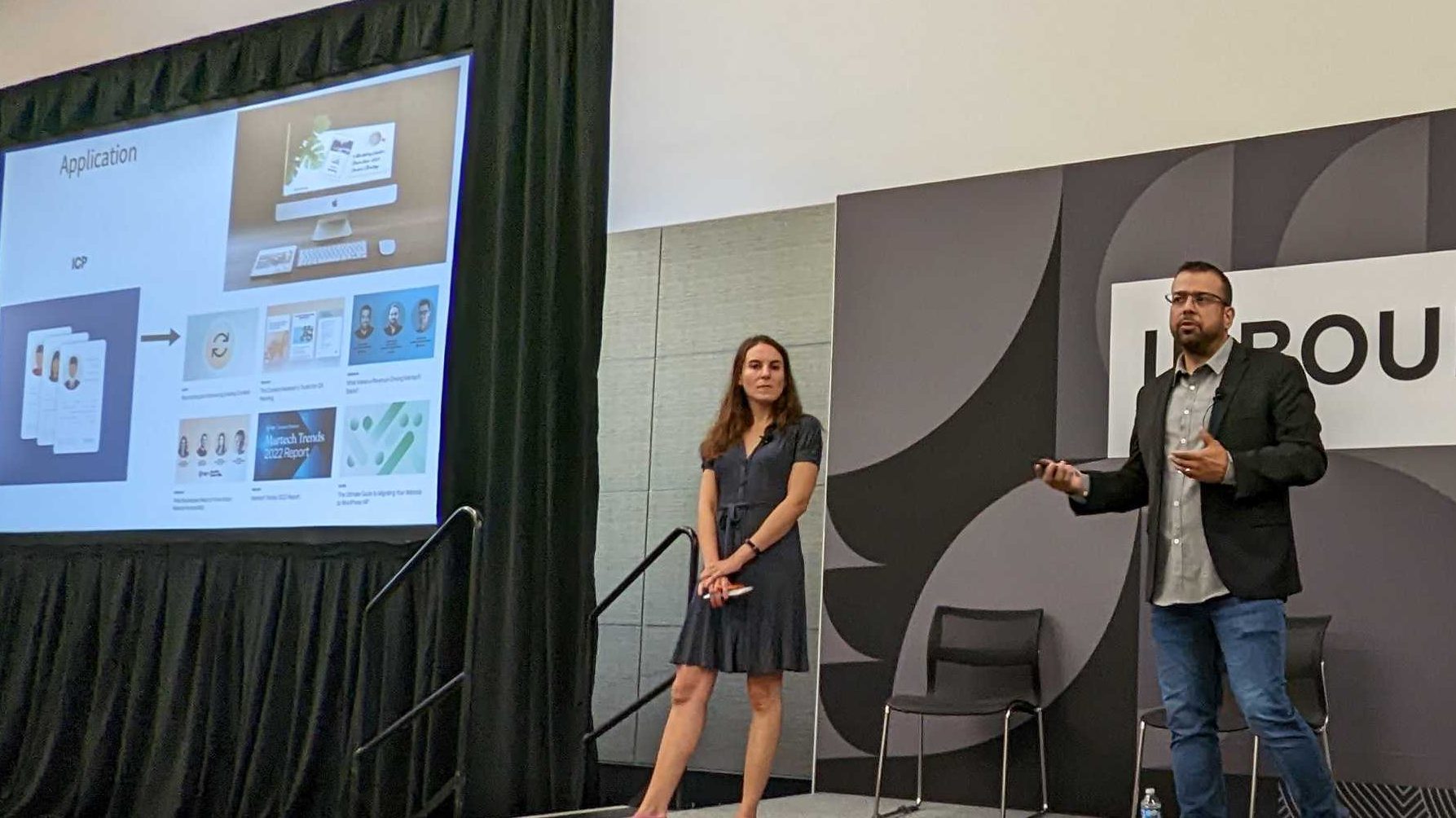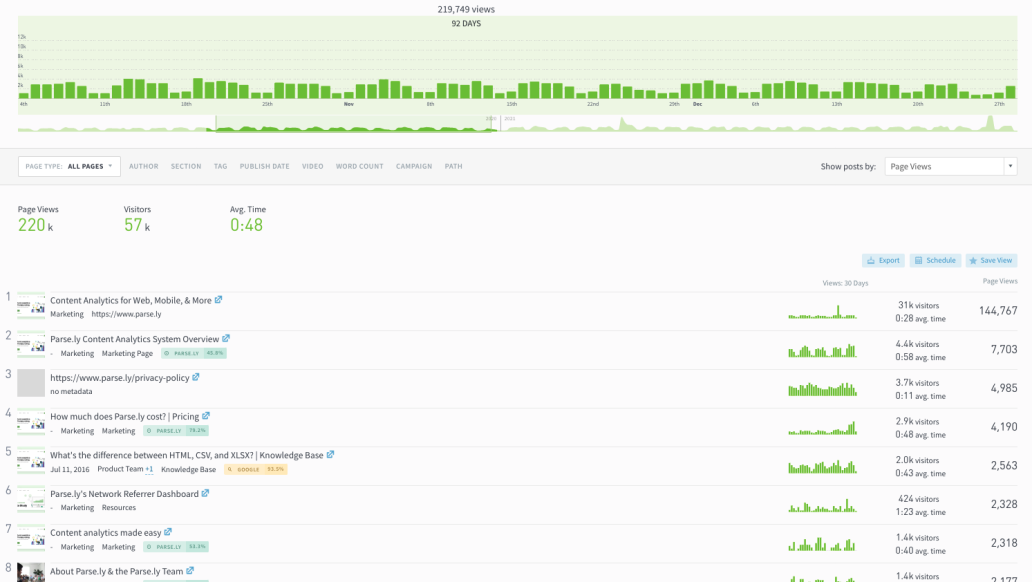How to Humanize Content Analytics with WordPress VIP
Using data to tell a story is the key to creating valuable content

Every marketer’s goal is to build content that drives consumer engagement, and ultimately conversions. But when 95% of purchasing decisions are made by the subconscious mind, how can you do that?
Storytelling.
Crafting stories that resonate with your audience and connect with their needs is the only way to effectively drive those actions. To establish a story that addresses prospect and customer pain points, you have to really understand your audience. And how do you do that?
Content analytics.
What are content analytics?
Content analytics can mean different things to different industries. But for us, “content analytics” is the measurement and analysis of visitor traffic and engagement with published content, such as blogs, articles, and podcasts. Content analytics metrics can include pageviews, engaged time, social interactions, conversions, acquisition sources, and much more.
These measurements are valuable to anyone creating content, including those in marketing and advertising, digital publishing, internal communications, sales enablement, etc.
There are many content analytics tools on the market, but they’re not all created equal. That said, we believe the best analytics tool is the one your team actually uses. This is important, as every content marketer makes content decisions daily and needs to be listening to the data..
Your content analytics will help you tell a story, but they should also tell you a story.
Listen to the story told by your content analytics
It may require a bit of creativity, but if you’re pulling the right metrics, they’ll create a story of your content performance and audience engagement. This picture is what will lead you to making informed, data-driven content strategy decisions.
Identify content goals
First, establish your content goals. These should be based on what you’re trying to achieve. Is it brand awareness? Conversions to gated content? Lead generation? Whatever those may be, tailor your definitions of success to multiple metrics for each goal. Diversifying your KPIs and associated metrics will give you a better understanding of performance.
Understand engagement
Look at your high-performing content. Where are consumers being referred from? How long are they engaging? Where are they going next?
Use the metrics you’ve tied to your KPIs to paint a picture of your audience and their engagement. Figure out what content drives people to make purchase decisions. This will prove the value of your content.
Is it a certain topic? A specific format? More or fewer graphics? A certain call-to-action? Dive into what parts of your content push consumers to the next stage of the funnel.
Don’t be afraid to experiment, track, and update your strategy to improve your content effectiveness based on the data.

Practicing what we preach
We implemented this story-driven strategy at Parse.ly—part of the WordPress VIP platform—which resulted in multiple content overhauls.
We started by identifying our top-performing content pieces. After taking a closer look into each, the team noticed something interesting about a recent ebook: Content Analytics Made Easy.

To the average eye, Content Analytics Made Easy wasn’t performing as well as other assets on our dashboard in terms of pageviews. However, because we had already established KPIs and associated metrics, we knew pageviews weren’t real revenue drivers for Parse.ly. So we kept digging.
Looking at the “Activity after viewing this post” section, we noticed the number one page readers visited directly after downloading our ebook was the pricing page. This resulted in a total of six pricing/demo requests over the selected three-month period.

To drive more demo requests on the site, we decided to do an entire webinar titled Content Analytics Made Easy. Sound familiar? Based on the success of the webinar, we then decided to make our home page reflect the verbiage that clearly resonated with our audience.

After these changes, we saw a 21% increase in organic traffic, and our inbound leads and demo requests increased exponentially. It’s been so successful for us that it’s still what we use today. This is just one anecdotal example, yet it’s clear that centering your content strategy on your audience experience improves content performance.
Humanize content analytics because metrics are people, too
Our takeaway is this: content analytics are great, but they should be a stepping stone to identifying the human aspect of content performance. It’s easy to look at numbers and think of them as just that. But they represent real people with real problems who are seeking solutions from your product and/or services.
Always remember the human behind the metric. That’s whom your content needs to resonate with, whom you need to personalize your content for. That’s why it’s important to regularly revisit your data, and let that inform your content strategy. Create value for your audience. Do that and you’ll have no problem creating content that drives conversions.

Get a demo to learn how WordPress VIP and Parse.ly work together seamlessly to provide a comprehensive content management solution.